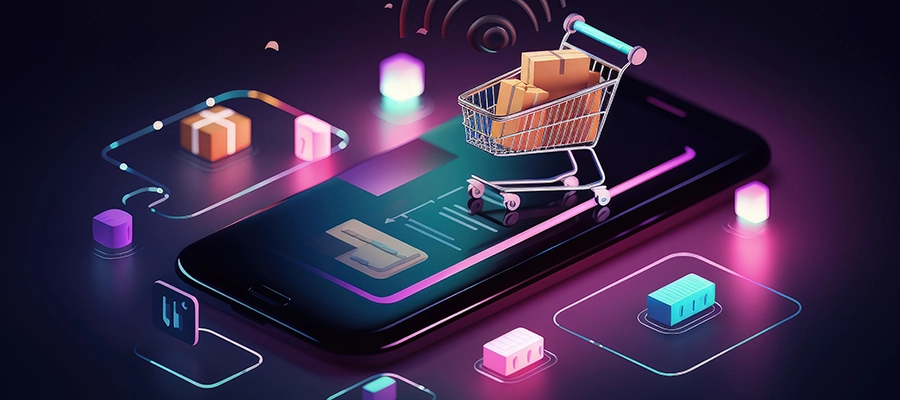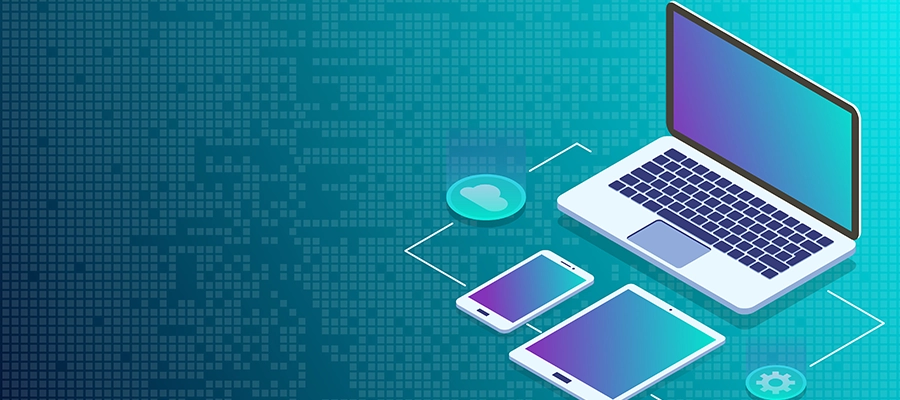In a world inundated with information and messages vying for our attention, what sets a brand or product apart from the rest? The answer often lies in the power of visuals. From the iconic golden arches of McDonald's to the sleek simplicity of Apple's logo, visual elements play a monumental role in shaping our perceptions and preferences. But what exactly is it about these visuals that captivate our minds and influence our choices?
Imagine this: A single glance at a well-designed poster can convey emotions, evoke memories, and spark desire. A cleverly crafted brochure can tell a story, inspire trust, and drive action. In the vast landscape of marketing, visuals are the secret language that transcends words and speaks directly to our senses.
This is where Creative Design Services enter the scene as the architects of visual excellence. They are the masterminds behind the artful brochures, eye-catching posters, enticing catalogs, and captivating illustrations that breathe life into brands and ideas. But what makes their work truly exceptional? What secrets do they hold in their palettes and canvases that transform ordinary concepts into extraordinary visual narratives?
To unlock these mysteries and appreciate the remarkable impact of Creative Design Services, we embark on a journey through the realm of design, marketing, and artistry. Together, we'll explore the facets of design that have the potential to turn heads, win hearts, and drive success.
Top 5 Key Design Assets for your Branding
Design assets are essential components of a digital marketing strategy, as they play a crucial role in attracting, engaging, and converting your target audience. Here are five critical design assets for a digital marketing strategy:
Website Design:
Your website is often the first point of contact between your brand and potential customers. An aesthetically pleasing, user-friendly, and responsive website is essential for creating a positive first impression and keeping visitors engaged. Effective website design includes attention to layout, color schemes, typography, and navigation elements.
Social Media Graphics and Poster Design:
Social media platforms are powerful marketing tools, and eye-catching graphics are essential to stand out in the crowded social feeds. Create visually appealing profile images, cover photos, and post graphics that align with your brand identity. Consistency in design across different platforms helps reinforce brand recognition. Look up for poster design services to know what lays ahead.
Email Templates:
Email marketing remains a potent digital marketing tool. Designing attractive and responsive email templates ensures that your messages look professional and appealing on various devices. Incorporate visuals, such as images and graphics, along with engaging copy to drive conversions and customer engagement.

Infographics:
Infographics are an excellent way to convey complex information in a visually appealing and easy-to-understand format. They are highly shareable and can help you communicate data, statistics, or processes effectively. Well-designed infographics can enhance the credibility of your content and encourage social sharing.
Brochures and Display Ads:
If you're running online advertising campaigns, banner ads and display ads are crucial design assets. These ads need to be attention-grabbing and consistent with your brand identity. Consider various ad formats, sizes, and placements to maximize the impact of your advertising efforts. Signing up for brochure design services can give you some clarity on what you need.
These design assets should be created with a deep understanding of your target audience, align with your brand's visual identity, and be optimized for both desktop and mobile devices. Regularly update and refresh these assets to keep your digital marketing strategy fresh and engaging for your audience.
Creative Designs: A Closer Look
In a digital age where information floods our screens from every corner, a well-designed brochure is a tangible oasis in a desert of digital noise. Its importance in effective communication cannot be overstated. Think about the last time you picked up a brochure at a hotel lobby or received one in the mail; it was likely a carefully designed piece of artistry. Brochures serve as powerful tools for conveying information concisely and memorably.
Tips for Creating Impactful Creatives
Designing an impactful visual goes far beyond just arranging text and images on a page; it's an art that demands attention to detail and a deep understanding of your target audience. Here are some tips to create intelligent and engaging visuals that leave a lasting impression:
Know Your Audience: Before you put pen to paper or pixels to screen, understand who your audience is. What are their interests, pain points, and desires? Tailor your design to resonate with them. For instance, a tech company's asset for industry professionals would look vastly different from one targeting everyday consumers.
Clarity is Key: Keep your message clear and concise. Use headlines, subheadings, and bullet points to break up content and make it easily scannable. Make sure readers can quickly grasp the benefits or information you're offering.
Visual Storytelling: Incorporate compelling visuals that tell a story. High-quality images and graphics can convey emotions and ideas more effectively than text alone. If you're designing a visual element for a wildlife sanctuary, stunning photos of the animals and their habitats can evoke a sense of wonder.
Consistency Matters: Maintain consistency in design elements such as colors, fonts, and style throughout the downloadable element. This builds brand recognition and makes your design look polished and professional.
Call to Action (CTA): What do you want your readers to do after reading your creative? Whether it's making a purchase, signing up for a newsletter, or visiting your website, include a clear and compelling CTA that guides them towards the desired action.
Other Design Services Worth Exploring
In the world of digital marketing, creative visualization is the difference between being a brand that people talk about and a brand that customers invest in.
This is why a growing business should consider the below design services.
Catalog Design Services:
Effective Organization: Catalogs need to present a wide range of products or services in a structured and easily navigable manner. Catalog design services excel in organizing content, creating clear product categories, and ensuring that customers can quickly find what they're looking for.
Visual Storytelling: Beyond just listing products, catalog design services leverage visuals and layouts to tell a compelling story about a brand or its offerings. They use high-quality images, typography, and design elements to evoke emotions, showcase product features, and convey the brand's identity.
Creative Illustration Services:
Custom Visual Branding: Creative illustration services create custom artwork that becomes an integral part of a brand's visual identity. These illustrations can be used across various marketing materials, from websites to brochures, ensuring consistency and uniqueness.
Engagement and Emotion: Illustrations have the power to connect with audiences on an emotional level. Creative illustration services design visuals that not only capture attention but also convey messages, themes, and brand values in a way that resonates with viewers.
Packaging Label Design Services:
Brand Recognition: Packaging label design services focus on creating labels that are not just informative but also visually appealing. They incorporate brand logos, colors, and fonts to ensure instant recognition on store shelves.
Compliance and Information: These services understand the regulatory requirements for product labels, ensuring that all necessary information, such as ingredients, nutritional facts, and warnings, is presented clearly and in compliance with industry standards.

Product Packaging Design Services:
Protection and Presentation: Product packaging design services aim to strike a balance between protecting the product during transit and presenting it attractively to consumers. They choose materials, shapes, and sizes that optimize both aspects.
Differentiation: In a crowded marketplace, product packaging must stand out. These services employ creative design elements, including unique packaging shapes, textures, and finishes, to make products instantly recognizable and desirable.
Digital Art Design Services:
Versatile Digital Creations: Digital art design services create versatile digital assets that can be used in various digital marketing channels, including websites, social media, and email campaigns. They understand the digital landscape and design accordingly.
Dynamic Visual Content: In the age of dynamic content, these services are skilled in creating animated and interactive visuals that engage audiences and enhance user experiences, such as animated infographics or interactive web elements.
Interactive Design Services:
Engagement and Interactivity: Interactive design services focus on creating web and app interfaces that engage users through interactivity. They design elements like clickable buttons, forms, sliders, and animations that make the user experience more dynamic and engaging.
User-Centered Design: These services prioritize user-centered design principles, ensuring that the interactive elements are intuitive, user-friendly, and accessible across various devices and screen sizes. They aim to create seamless user journeys and conversions.
Trends in Creative Design Services
Keeping up with the market trends enables you to monitor the pulse of your target audience and deliver resonating designs. Here are a few trends you may consider.
Adaptive Design for Multiple Devices:
As technology continues to evolve, it's essential for creative design services to prioritize adaptive design. This means creating visuals and layouts that seamlessly adapt to various screen sizes and devices, including smartphones, tablets, and desktop computers. Ensuring a consistent and user-friendly experience across different devices is crucial for engaging a diverse audience.

Sustainability in Design:
Sustainable design practices are gaining prominence in the creative design landscape. Businesses are increasingly aware of their environmental impact, and design services are responding by incorporating eco-friendly materials, energy-efficient processes, and recyclable packaging into their designs. Sustainability is not only a trend but a long-term commitment to reducing the ecological footprint.
3D and Augmented Reality Design:
The integration of 3D and augmented reality (AR) into design is transforming the way audiences interact with visual content. Creative design services are exploring the possibilities of 3D modeling and AR to create immersive experiences. This trend enhances product visualization, offers interactive storytelling, and blurs the line between the virtual and physical worlds.
Personalization and Data-Driven Design:
Personalization has become a cornerstone of effective marketing. Creative design services are leveraging data-driven insights to tailor visuals and messaging to individual user preferences. From personalized email campaigns to dynamically generated website content, the ability to create highly relevant and personalized design elements is driving engagement and conversions.
Partner with Vajra Global: Your Contemporary Design Partner
In the ever-evolving realm of marketing, where digital landscapes are constantly shifting and consumer tastes are ever-changing, one thing remains steadfast – the enduring value of visual excellence. Visuals have the power to captivate, convey, and convert. partnership with Vajra Global brings you a world of creative design expertise. It's about more than just pretty pictures – it's about crafting visuals that align with your brand identity, speak to your audience's desires, and drive results. Whether it's custom illustrations, website design, or interactive content, Vajra Global's contemporary design solutions are your passport to standing out in the digital era.


